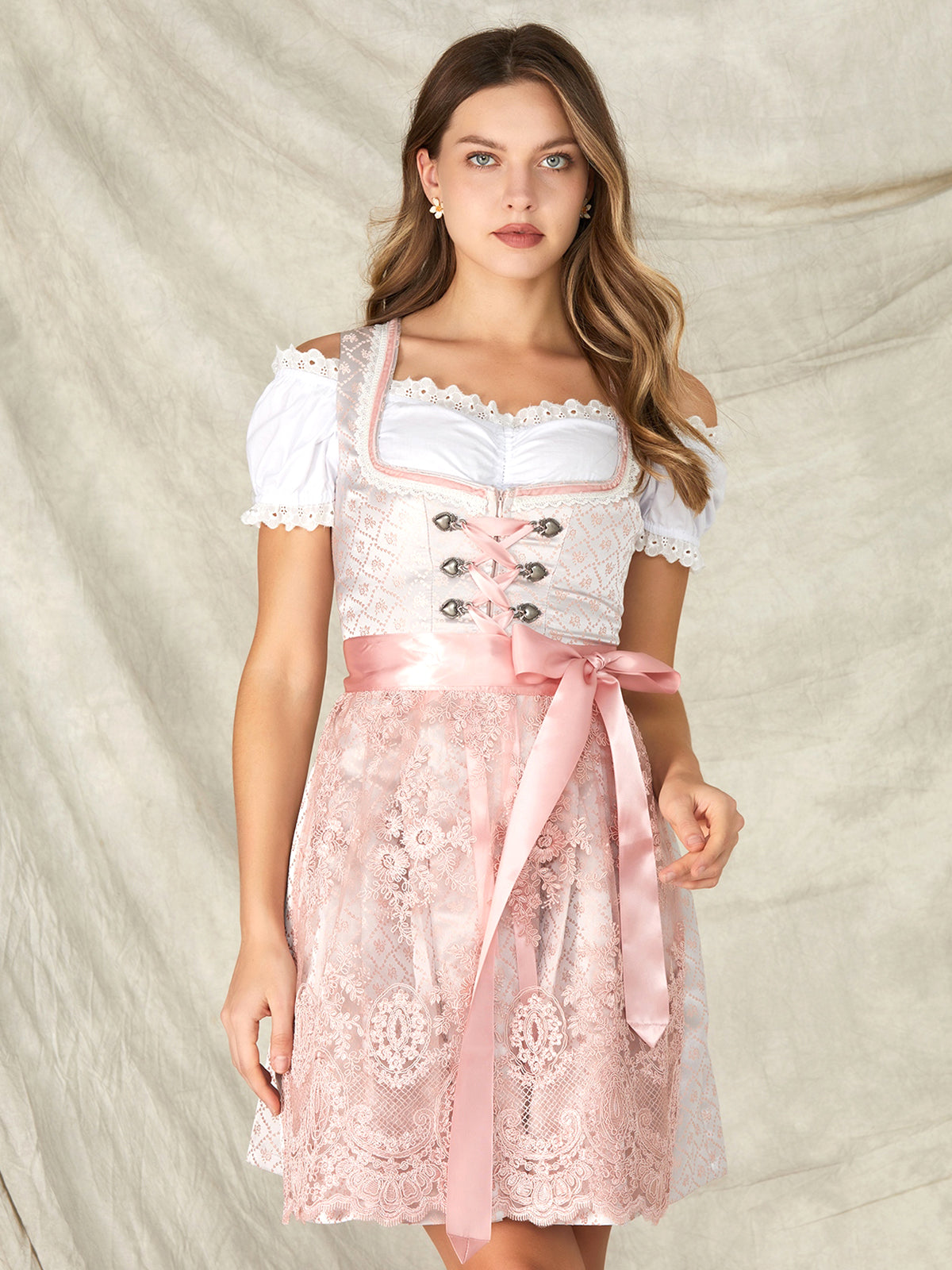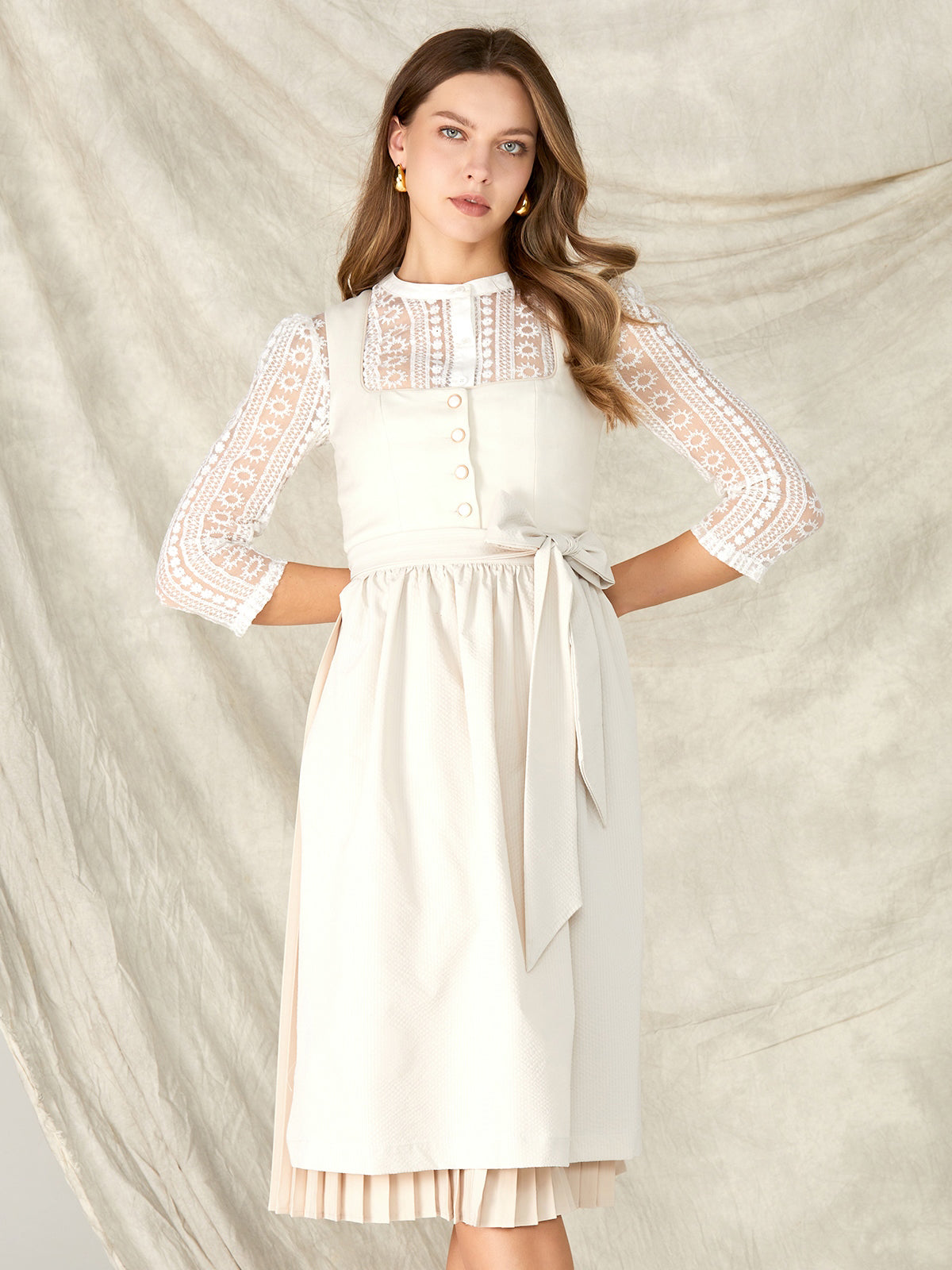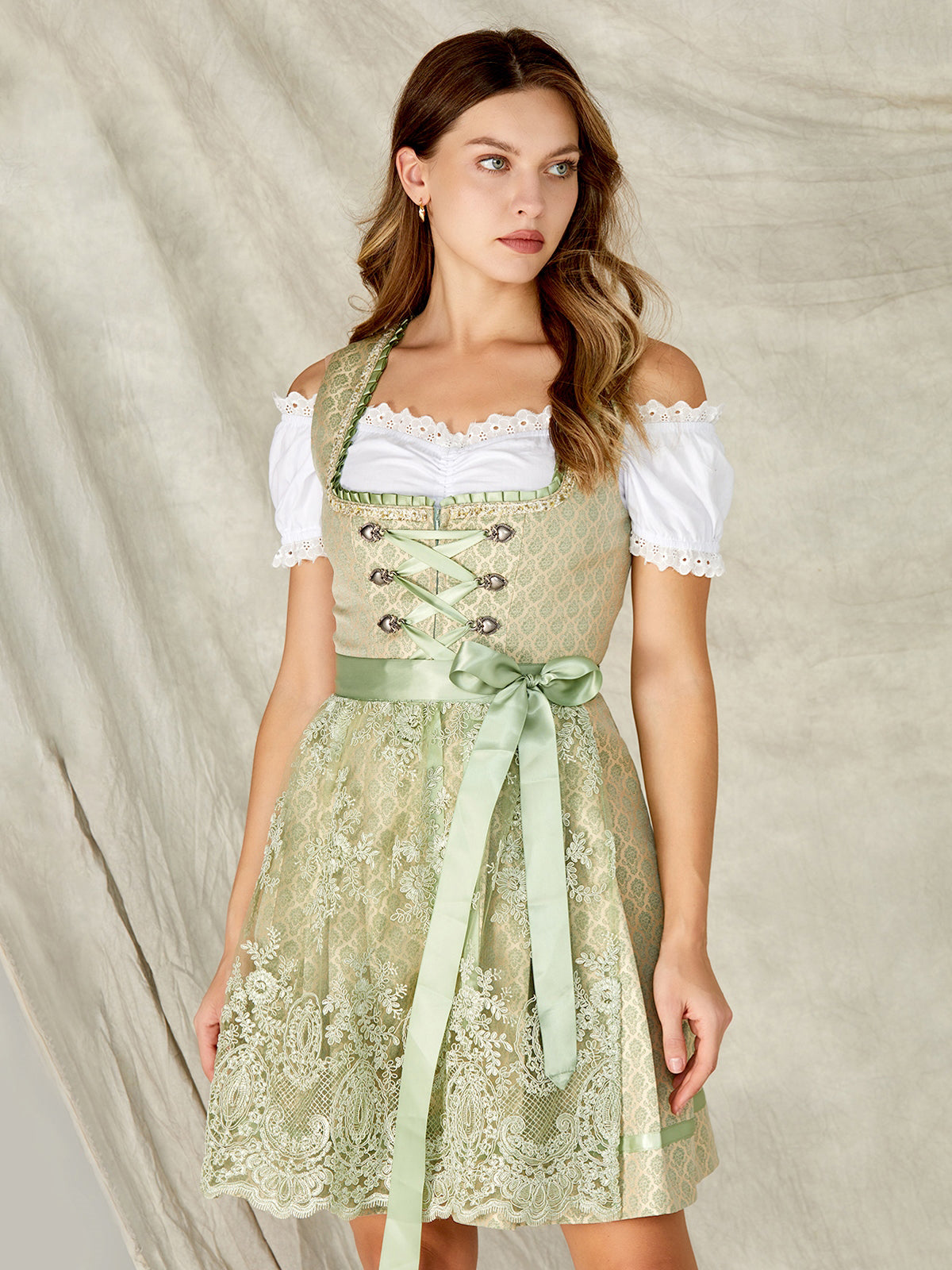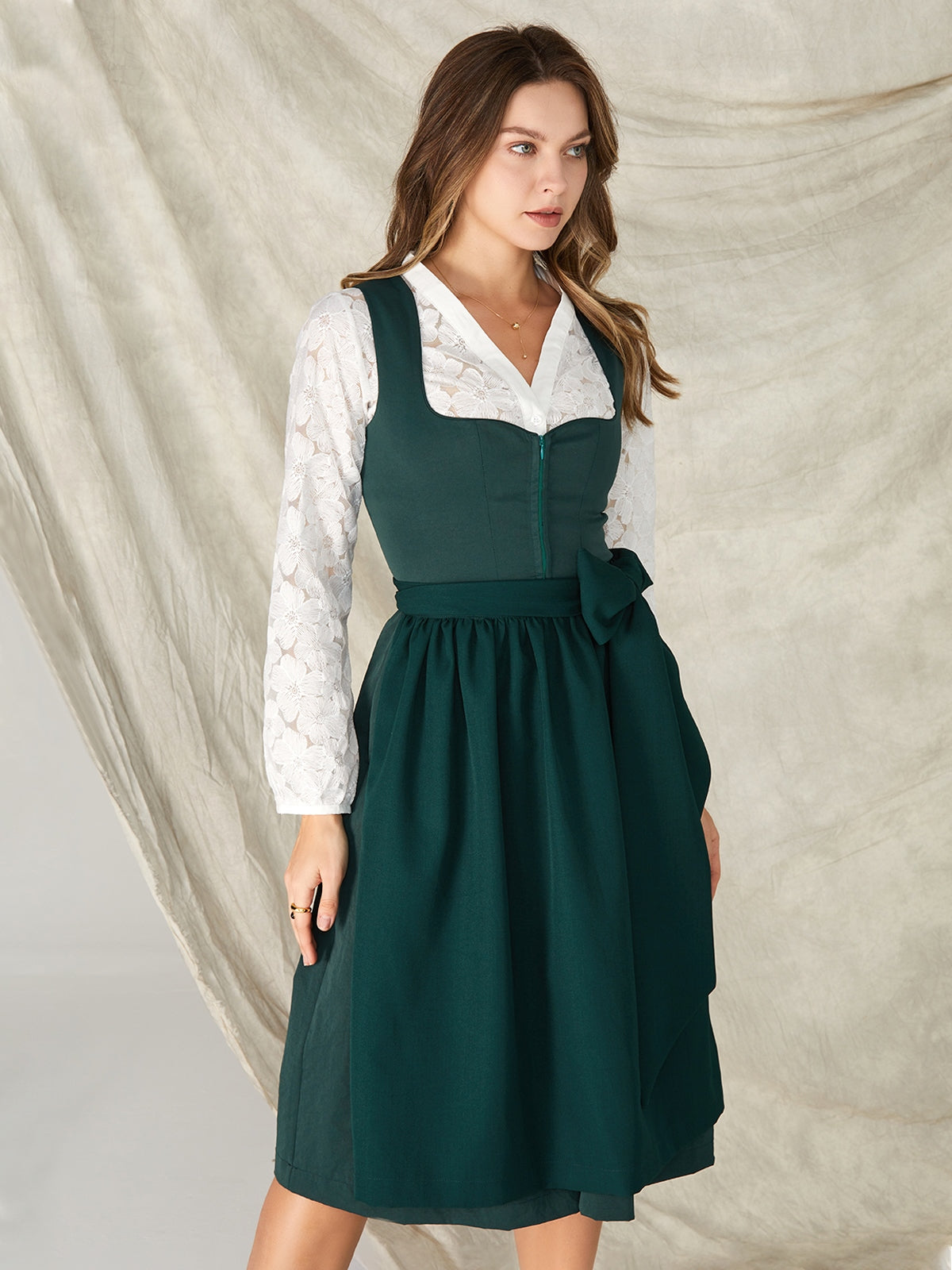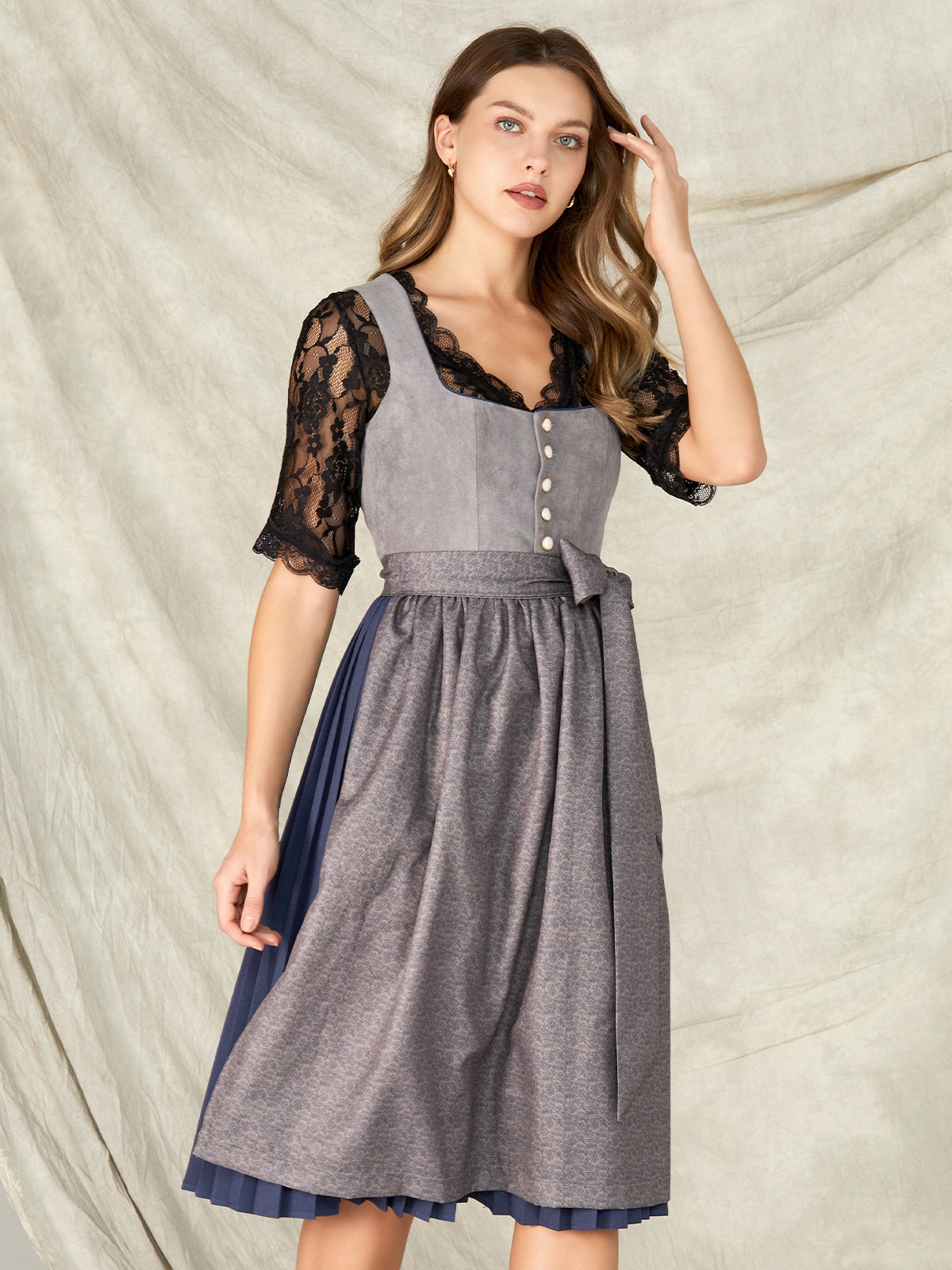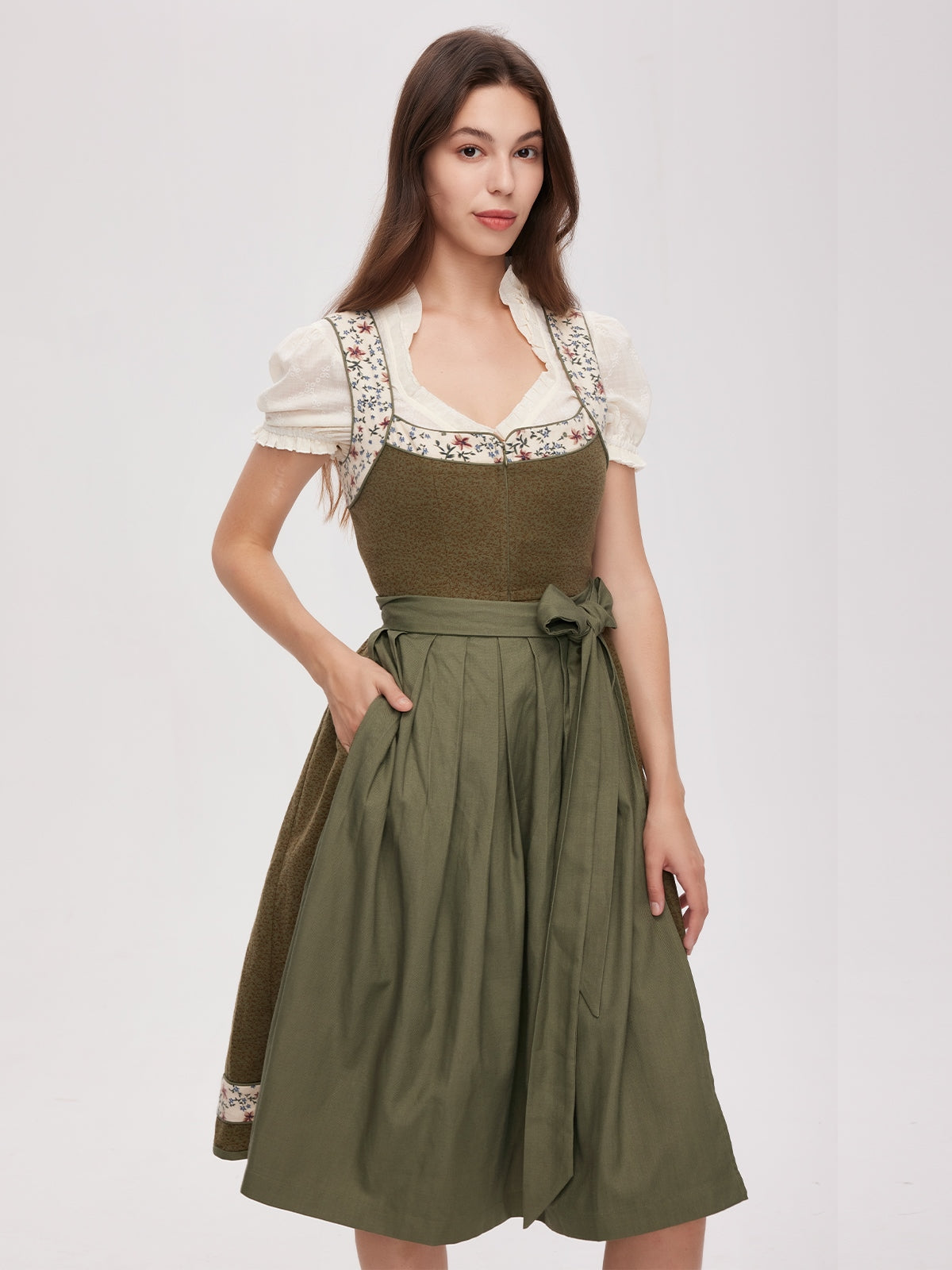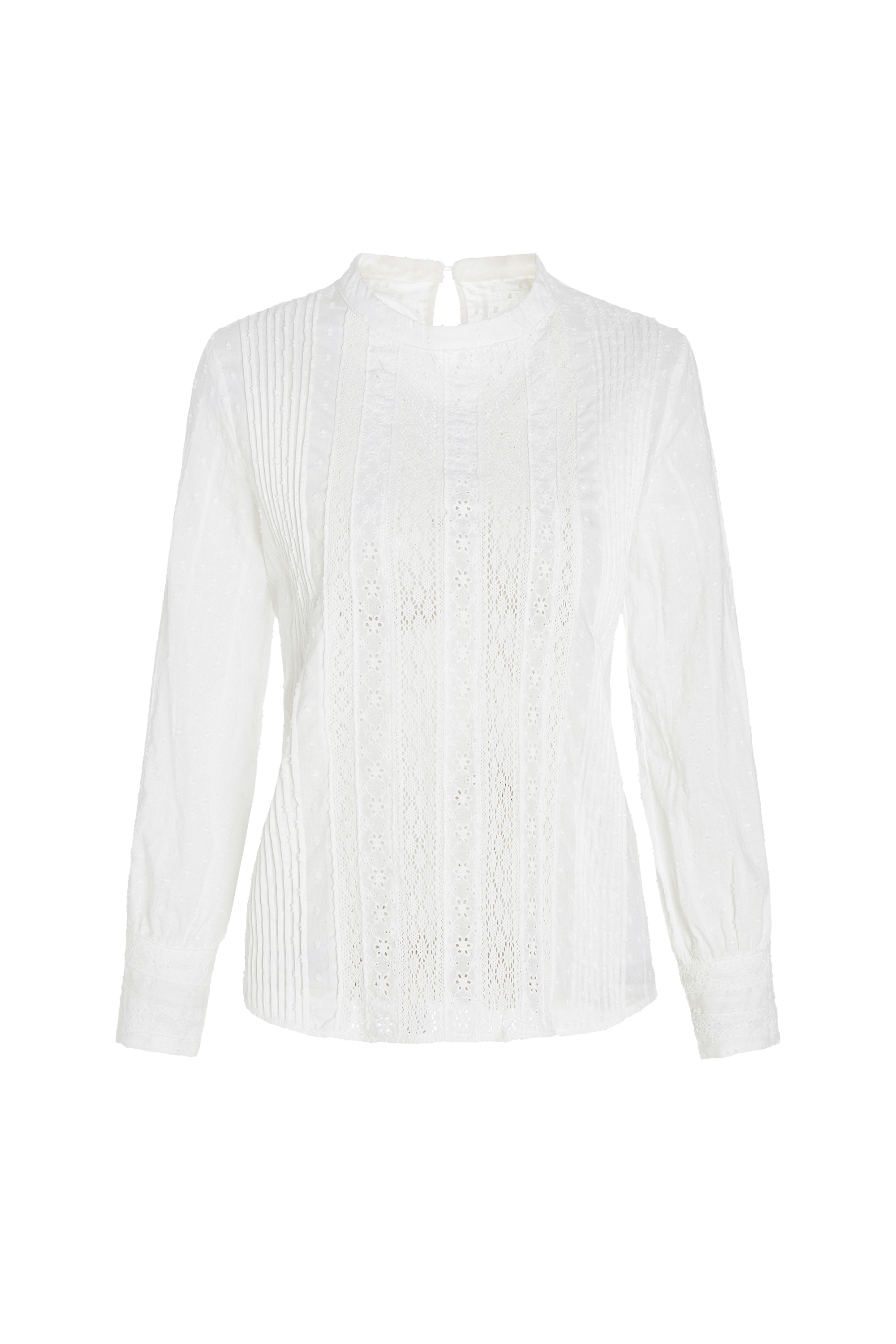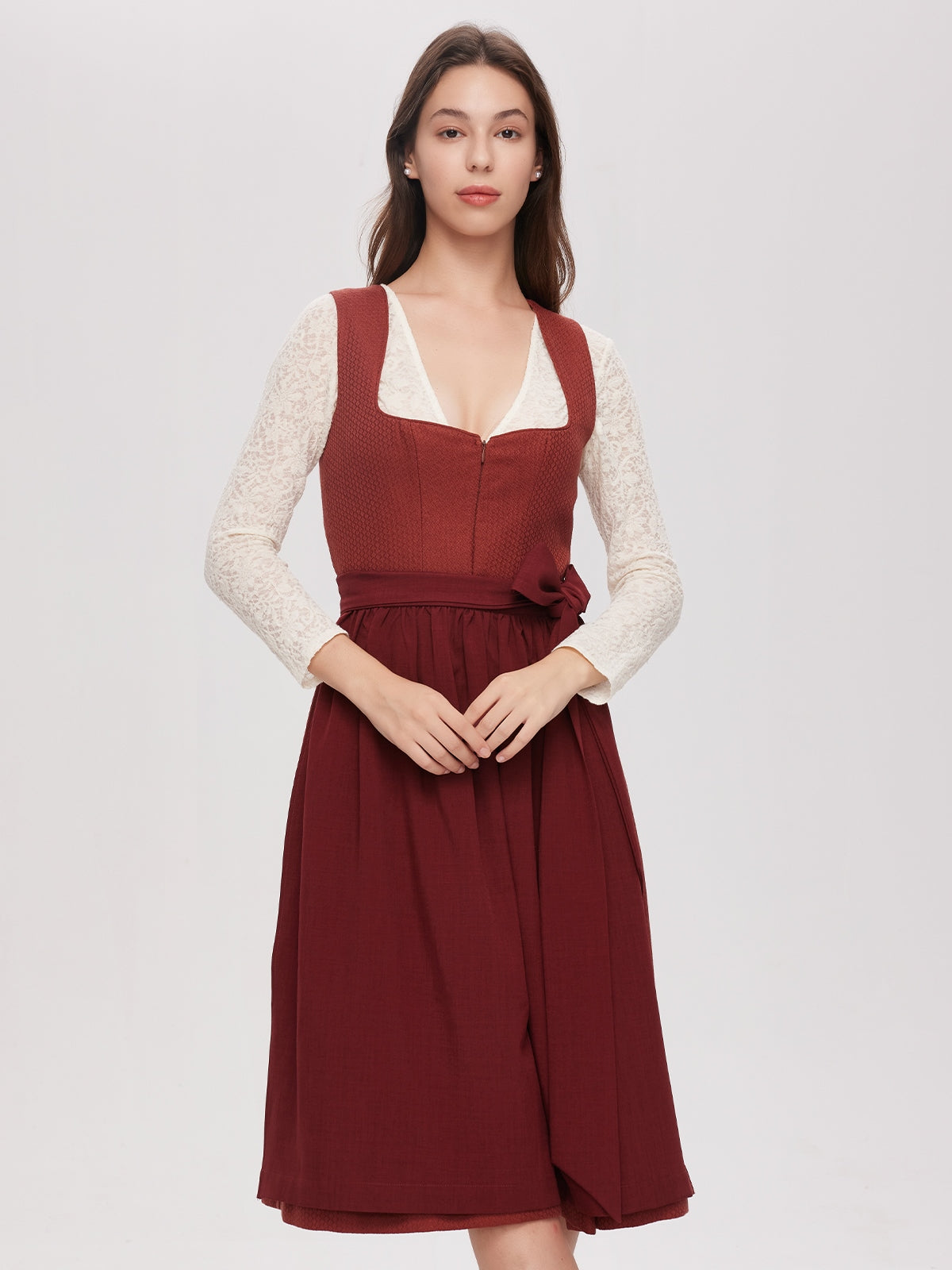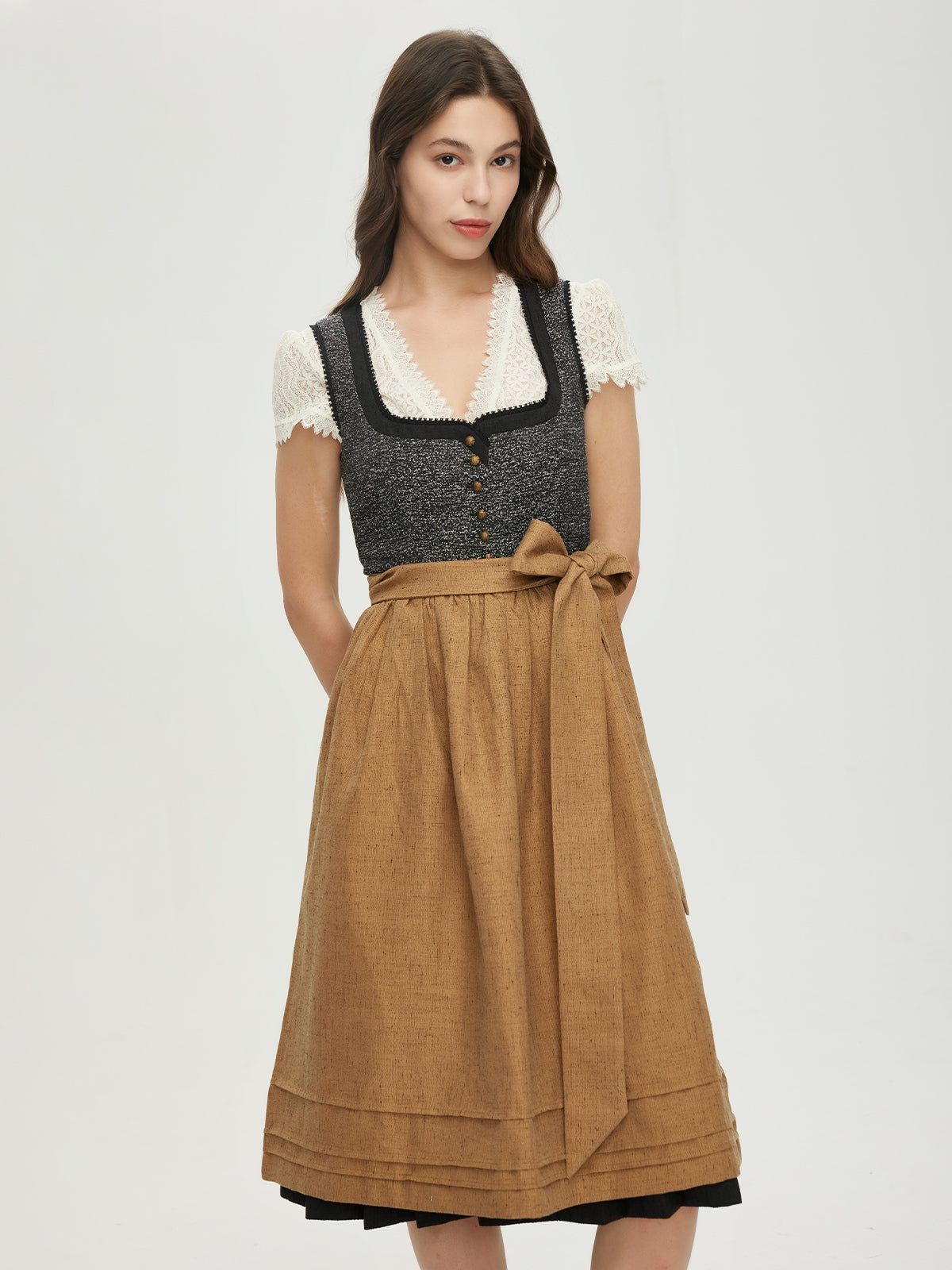Dirndl reinvented: From folk festival classic to everyday companion
The dirndl has long since freed itself from the constricting constraints of traditional festive wear. While the green dirndl, with its flounced gown and tightly woven bodice, was once found exclusively at folk festivals like Oktoberfest, modern designer versions are now conquering the streets of major cities. The new generation of the dirndl combines simple aesthetics with innovative functionality – a prime example of how tradition is making its way into the 21st century.
Stretchy fabrics and figure-hugging cuts: comfort as a key feature
A key trend in current dirndl fashion is the use of stretchy fabrics, which guarantee freedom of movement and a perfect fit. While classic models were often made of stiff linen or heavy wool, designers today are opting for stretch cotton or microfiber materials that feel like a second skin. The green dirndl, in particular, benefits from this innovation: The deep green tones combined with shiny surfaces create a particularly modern effect, while the figure-hugging cut harmoniously emphasizes the silhouette.
One example is the dirndl developed by the Munich-based brand "Alpine Revival," which boasts a 3D knit pattern and hidden elastane inserts. Designer Lena Wagner explains: "We wanted to create a garment that could be worn from the office to dinner – without compromising on style or comfort."
Removable lace inserts and hidden pockets: multifunctionality in detail
Another highlight of modern dirndl collections are removable lace inserts that transform the look depending on the occasion. For example, a plain green dirndl can be transformed with handmade lace sleeves in a romantic style, while the same basic style without sleeves creates a cool, minimalist look. This modularity reflects the growing demand for diverse wardrobes—a trend that has also been clearly demonstrated by searches for dirndls over the past two years.
Practical details such as hidden pockets in the skirt layers or UV-protective coatings on the fabric round out the concept. Such features are especially indispensable for everyday wear: A survey by the fashion portal "Stylight.de" found that 72% of shoppers prefer a dirndl that is both aesthetically pleasing and functional.
Sporty combinations: How sneakers are revolutionizing the dirndl
Combining dirndls with sneakers has become a global street style trend. While just five years ago, purist fashion purists frowned upon this blend of traditional costume and urban casualness, today Instagram photos of women combining their green dirndls with white and yellow sneakers or even chunky sneakers dominate.
A particularly trendy look is the simple olive-green dirndl with contrasting white cords on the bodice, combined with minimalist Nike Air Max sneakers. This style overlay symbolizes the fusion of past and present—a phenomenon also known as the "heritage revival."
Tip for beginners:
- Choose a green dirndl with a high cotton content for a natural look
- Combine sneakers in earth tones to preserve the rustic character
- Remove detachable lace sleeves to enhance the sporty effect
Cultural Transformation: Designer Brands and the New Interpretation of Traditional Costume
Behind the revival of the dirndl are not only small manufacturers, but also renowned designer brands such as Hugo Boss and MCM, which incorporate the motif into their collections. The dirndl is often radically simplified: away from flounces and embroidery, in favor of geometric lines and monochrome layers of color. One example is MCM's Fall 2023 collection, which featured a shiny black dirndl with gold zippers – a statement against romanticized folk culture.
This artistic unleashing is also reflected in demand: the search term "buy dirndl" saw a 41% increase in 2023, with young customers particularly looking for unique designs.
Social media and the phenomenon of the "Oktoberfest street look"
No trend develops independently of social media these days. Platforms like TikTok and Pinterest have turned the dirndl into a viral fashion item—especially during beer garden season. Using the hashtag #OktoberfestStreetStyle, users post pictures of dirndl creations that are often far removed from the traditional version: neon-colored fabrics, asymmetrical cuts, and sneaker combos dominate the flood of images.
A viral video showed an influencer pairing her green dirndl with a transparent raincoat and cowboy boots—a look that garnered 2.3 million views within 48 hours. Such posts demonstrate how creative freedom is breaking down the boundaries of tradition while simultaneously driving demand for dirndls in niche markets.
Materials in Transition: From Velvet to High-Tech Coatings
The choice of materials for modern dirndls is more diverse than ever. In addition to classic fabrics like cotton and linen, designers are focusing on:
- Velvet ( velvet ) for a noble touch
- Artificial leather ( artificial leather ) for rock accents
- UV-resistant microfibers for outdoor use
The green dirndl in particular benefits from this variety of materials: a velvet dirndl in dark green looks elegant for evening events, while a light cotton fabric is perfect for a stroll during the day.
Investment value or trend piece? The question of longevity
Although many modern dirndls are designed as statement pieces, more and more buyers are placing value on longevity. A study by the University of Vienna found that 65% of respondents wear their dirndl at least three times a year—a clear signal that the garment isn't just seasonal.
For a sustainable investment we recommend:
- Choose simple colors like dark blue or olive that are timeless
- Look for hidden pockets and elastic inserts for everyday suitability
- Buy dirndls from trustworthy suppliers who guarantee ethical production
Conclusion: The Dirndl as a reflection of the fashion era
The modern dirndl is more than just a piece of clothing—it's a symbol of the fusion of tradition and innovation. With stretchy materials, removable details, and sporty combination options, it has established itself as a multifunctional everyday companion. Anyone who buys their green dirndl once is investing not just in an outfit, but in a piece of cultural transformation.
Whether visiting a beer garden, on a city tour, or even in the office: the dirndl proves that fashion only remains relevant when it changes – without forgetting its roots.

